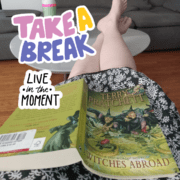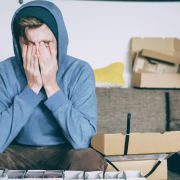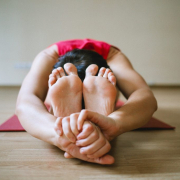How to Relieve Stress and Anxiety Using Essential Oils
In the fast-paced world we live in, finding moments of peace and tranquility can be challenging.
Stress and anxiety are common companions for many, yet nature provides a simple and effective remedy: essential oils.

These potent plant extracts have long been used to soothe the mind and body.
In this comprehensive guide, we’ll explore how you can harness the power of essential oils to reduce stress and anxiety and create a more serene daily experience.
The Essentials: How Essential Oils Can Help
Before we dig into the nitty-gritty of aromatherapy, it’s important to understand why essential oils are an effective tool for relaxation. Their aromatic compounds can impact the brain’s limbic system, known to play a role in emotions, behavior, motivation, and long-term memory. Here are the core reasons why essential oils can be a significant stress buster:
- Calming Aromas: Certain scents are proven to promote relaxation and reduce stress, such as lavender and chamomile.
- Mind-Body Connection: The act of inhaling a pleasant aroma can trigger a sense of calm and wellbeing.
- Ritual of Self Care: Applying essential oils can become a soothing ritual that grounds you and offers significant benefits.
- Reduction of Physical Symptoms: Stress often manifests physically; essential oils can help ease headaches, muscle tension, and sleep disturbances.
Now that we’ve established their merits, it’s time to select the right essential oils and learn how to use them effectively.
Choosing the Right Essential Oils
While personal preferences and individual responses to scents may vary, a few essential oils are renowned for their ability to reduce stress and anxiety:
Lavender
Lavender essential oil is a gateway to serenity. Known for its floral and herbaceous aroma, it’s often used for its calming properties, including the reduction of stress and improved sleep quality.
Chamomile
Both Roman and German chamomile essential oils offer a gentle, apple-like scent that can provide relief from nervous energy and mental unrest.
Bergamot
With its light, citrusy aroma, bergamot can uplift the spirit and help combat feelings of anxiety. It’s particularly effective when work or study pressures mount.
Ylang Ylang
This sweet and exotic floral oil can reduce heart rate, blood pressure, and cortisol levels, all of which contribute to a calm and relaxed disposition.
Remember to always opt for high-quality, pure essential oils to ensure safety and efficacy.
Methods of Application
Once you’ve chosen your oils, it’s time to apply them. There are a few primary methods for using essential oils to alleviate stress:
Inhalation
Inhaling directly from the bottle or from a few drops on a tissue can have instant calming effects. You can also add a drop to your palms, rub them together, cup your hands over your nose and mouth, and take several deep breaths.
Topical Application
When applying on the skin, essential oils should be diluted with a carrier oil, such as coconut or almond oil. Aim for a 2% dilution, which is about 12 drops of essential oil per fluid ounce of carrier oil. Common application spots include wrists, temples, and the bottoms of the feet.
Diffusion
Aromatherapy diffusers disperse essential oils into the air, allowing you to create a calming atmosphere in your home or workspace. Ultrasonic and nebulizing diffusers are particularly efficient at maintaining the oil’s therapeutic properties.
Choose the method that best fits your lifestyle and comfort level. If using oils topically, remember to conduct a patch test on a small area of skin to check for any adverse reactions.
Best Practices for Use
To ensure that your essential oil experience is both effective and safe, adhere to the following best practices:
Dilution Ratios
As mentioned, proper dilution is essential. Using too much essential oil can lead to skin irritation and sensitization over time.
Patch Testing
Always patch test a small amount of diluted oil on your skin before widespread application.
Safe Storage
Store essential oils in dark glass bottles in a cool, dark place to protect them from degradation caused by light and heat.
By approaching the use of essential oils with these best practices, you’ll enhance both safety and therapeutic benefit.
Creating a Relaxing Environment
Even the most soothing oils may struggle to work their magic in a chaotic space. It’s important to create an environment conducive to relaxation:
Setting the Mood
Dimming the lights and setting up comfortable seating can create a peaceful ambiance. Pair this with soft music or soothing sounds for an added tranquility boost.
Using Diffusers
Diffuse oils in your favorite space. A few drops of oil can transform the atmosphere, making it more inviting and peaceful.
Combining Scents
Experiment with blending different oils to create your own signature stress-relief scent. You might find that a custom combination of lavender and bergamot is just what your soul craves.
A harmonious environment combined with the right application can significantly enhance the stress-relieving properties of essential oils.
Incorporating Essential Oils into Daily Routine
Now that you have your oils and methods, it’s time to weave them into your daily routine:
Morning Rituals
Begin your day with a refreshing essential oil blend during your morning yoga or meditation. Peppermint and eucalyptus are excellent choices to clear your mind.
Evening Relaxation
Wind down with a calming blend of lavender and chamomile during your evening bath or personal care routine. This signals your body that it’s time to relax and prepares you for a restful sleep.
Work Breaks
Take short breaks throughout the day to enjoy a quick aromatherapy session. A roll-on bottle with a diluted stress-relief blend in your desk can act as a savior during tense moments.
Consistency is key to reaping the full benefits of your essential oil regimen. By incorporating them into various parts of your day, you can manage stress and anxiety effectively and enjoy their aromatic company at all the right moments.
Conclusion: Your Aromatic Adventure Awaits
With this guide, you have the tools to start your aromatic adventure towards a stress-free life. Begin with a few of the suggestions listed here and listen to your body’s response. Aromatherapy is a deeply personal experience, and your path to stress relief is as unique as your olfactory palette. Remember to explore new scents and blends; the world of essential oils is vast and varied. Here’s to a calmer, more relaxed you—blooming one drop at a time.



 Photo by Christian Erfurt on Unsplash
Photo by Christian Erfurt on Unsplash 



 Jennifer Malisauskas 2023
Jennifer Malisauskas 2023